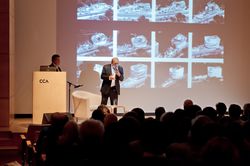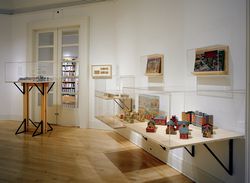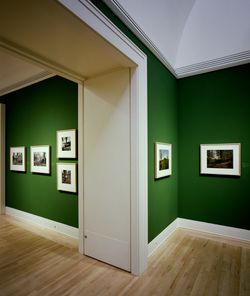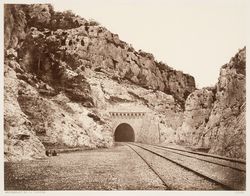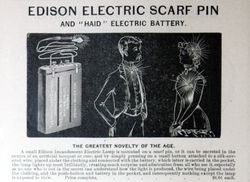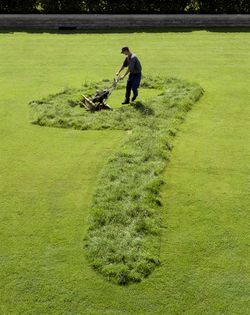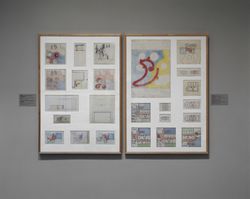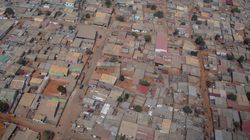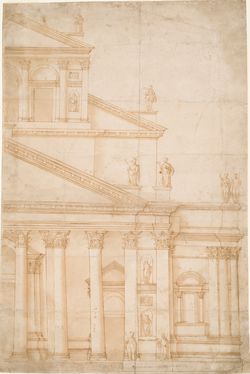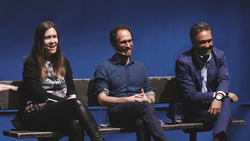Siza Speaks
Portuguese architect and Pritzker prize-winner Álvaro Siza presents a rare lecture in North America on the design development of the Iberê Camargo Museum in Porto Alegre, a structure noted for its sculptural volumes and tight integration with a coastal escarpment. He discusses the key role of hand sketches in the design process, from massing studies to fine-tuning(...)
Paul-Desmarais Theater
26 April 2012 , 7pm
Siza Speaks
Actions:
Description:
Portuguese architect and Pritzker prize-winner Álvaro Siza presents a rare lecture in North America on the design development of the Iberê Camargo Museum in Porto Alegre, a structure noted for its sculptural volumes and tight integration with a coastal escarpment. He discusses the key role of hand sketches in the design process, from massing studies to fine-tuning(...)
Paul-Desmarais Theater
Toy Town
Toy Town explores how villages, towns, and cities have been represented in toys from Europe and North America. Drawn from CCA’s collection of architectural toys and games, the twenty-nine toys reflect shifting social values and different approaches to the design, organisation, and planning of communities in the nineteenth and twentieth centuries. Toy Town is the sixth in(...)
Octagonal gallery
22 October 1997 to 31 May 1998
Toy Town
Actions:
Description:
Toy Town explores how villages, towns, and cities have been represented in toys from Europe and North America. Drawn from CCA’s collection of architectural toys and games, the twenty-nine toys reflect shifting social values and different approaches to the design, organisation, and planning of communities in the nineteenth and twentieth centuries. Toy Town is the sixth in(...)
Octagonal gallery
Through a commission from the CCA, three contemporary photographers spent six years interpreting the work of Frederick Law Olmsted (1822–1903), North America’s most important landscape architect. *Viewing Olmsted: Photographs by Robert Burley, Lee Friedlander, and Geoffrey James* presents 155 photographs from this commission to offer visitors an opportunity to understand(...)
Main galleries
16 October 1996 to 2 February 1997
Viewing Olmsted: Photographs by Robert Burley, Lee Friedlander, and Geoffrey James
Actions:
Description:
Through a commission from the CCA, three contemporary photographers spent six years interpreting the work of Frederick Law Olmsted (1822–1903), North America’s most important landscape architect. *Viewing Olmsted: Photographs by Robert Burley, Lee Friedlander, and Geoffrey James* presents 155 photographs from this commission to offer visitors an opportunity to understand(...)
Main galleries
Édouard Baldus, more than any other photographer, defined the modern landscape and established the standard for architectural photography. The Photographs of Édouard Baldus: Landscapes and Monuments of France chronicles the Golden Age of France as seen by the photographer. The Photographs of Édouard Baldus is organized by chronological sections to reveal the evolution of(...)
Main galleries
25 January 1995 to 23 April 1995
The Photographs of Édouard Baldus: Landscapes and Monuments of France
Actions:
Description:
Édouard Baldus, more than any other photographer, defined the modern landscape and established the standard for architectural photography. The Photographs of Édouard Baldus: Landscapes and Monuments of France chronicles the Golden Age of France as seen by the photographer. The Photographs of Édouard Baldus is organized by chronological sections to reveal the evolution of(...)
Main galleries
Visiting Scholar Katie Lloyd Thomas presents her research: In the United Kingdom, the naming and selection of building products—or ‘shopping’ on behalf of the client—only became part of the architect’s role during the vast expansion of mass manufacturing in the 1930s. These radical transformations, largely overlooked today, were enthusiastically embraced and debated by(...)
Shaughnessy House
20 July 2017, 6pm
Visiting Scholar Seminar: Katie Lloyd Thomas
Actions:
Description:
Visiting Scholar Katie Lloyd Thomas presents her research: In the United Kingdom, the naming and selection of building products—or ‘shopping’ on behalf of the client—only became part of the architect’s role during the vast expansion of mass manufacturing in the 1930s. These radical transformations, largely overlooked today, were enthusiastically embraced and debated by(...)
Shaughnessy House
Mel Ziegler: Growing Concern
The front garden is a sign, a place both public and private, conveying the convictions and values of the households they frame. Growing Concern, a grass relief in Baile Park by American artist Mel Ziegler (b.1956), represents the North American obsession with the lawn. The artist considers the cultural obsession with the growth of our lawns to be symbolic of the taming(...)
Baile Park
16 June 1998 to 8 November 1998
Mel Ziegler: Growing Concern
Actions:
Description:
The front garden is a sign, a place both public and private, conveying the convictions and values of the households they frame. Growing Concern, a grass relief in Baile Park by American artist Mel Ziegler (b.1956), represents the North American obsession with the lawn. The artist considers the cultural obsession with the growth of our lawns to be symbolic of the taming(...)
Baile Park
Paul Nelson (1895–1979), American architect, film set designer, painter, critic, and educator, taught and practised architecture in the United States and France for over fifty years. Nelson was a central figure in the development of functionalism in the 1930s and 1940s, which rejected the Beaux-Arts language in favour of technological and functional expression. The Filter(...)
Main galleries
27 March 1991 to 26 May 1991
The Filter of Reason: The Work of Paul Nelson
Actions:
Description:
Paul Nelson (1895–1979), American architect, film set designer, painter, critic, and educator, taught and practised architecture in the United States and France for over fifty years. Nelson was a central figure in the development of functionalism in the 1930s and 1940s, which rejected the Beaux-Arts language in favour of technological and functional expression. The Filter(...)
Main galleries
Learning from... Luanda
With a metropolitan population of over 5 million, Luanda is the third most populated Portuguese-speaking city in the world after São Paulo and Rio de Janeiro. Architect and researcher Paulo Moreira proposes alternative approaches to urbanism based on ongoing research in Chicala, an informal settlement with direct connection with the commercial areas of the city, as well(...)
Paul-Desmarais Theatre
1 November 2012 , 7pm
Learning from... Luanda
Actions:
Description:
With a metropolitan population of over 5 million, Luanda is the third most populated Portuguese-speaking city in the world after São Paulo and Rio de Janeiro. Architect and researcher Paulo Moreira proposes alternative approaches to urbanism based on ongoing research in Chicala, an informal settlement with direct connection with the commercial areas of the city, as well(...)
Paul-Desmarais Theatre
The history of architecture addresses the relationships between spaces, buildings, urban geometries, and social practices—it tells us how an experience of space corresponds to an experience of the world. To this end, this lecture will analyze the sixteenth-century debate around the completion of the facade of the Basilica of San Petronio in Bologna, partially built in the(...)
Paul Desmarais Theatre Keyword(s):
Guido Beltramini, church of San Petronio, Bologna, Andrea Palladio, Baldassare Peruzzi, Giacomo da Vignola
5 October 2017, 6:30pm
Guido Beltramini, what was history for patrons and architects in Bologna in 1579?
Actions:
Description:
The history of architecture addresses the relationships between spaces, buildings, urban geometries, and social practices—it tells us how an experience of space corresponds to an experience of the world. To this end, this lecture will analyze the sixteenth-century debate around the completion of the facade of the Basilica of San Petronio in Bologna, partially built in the(...)
Paul Desmarais Theatre Keyword(s):
Guido Beltramini, church of San Petronio, Bologna, Andrea Palladio, Baldassare Peruzzi, Giacomo da Vignola
No Parks?
Are parks bad? These quarantined bits of land and water speak to a confused desire for some kind of “nature”—and they might be good for our health—but do they also serve to excuse our continued bad behaviour? Parks are not innocent. City parks are real estate assets and urban “amenities” created by planners, landscape architects, hydrological engineers, police(...)
25 May 2017
No Parks?
Actions:
Description:
Are parks bad? These quarantined bits of land and water speak to a confused desire for some kind of “nature”—and they might be good for our health—but do they also serve to excuse our continued bad behaviour? Parks are not innocent. City parks are real estate assets and urban “amenities” created by planners, landscape architects, hydrological engineers, police(...)
